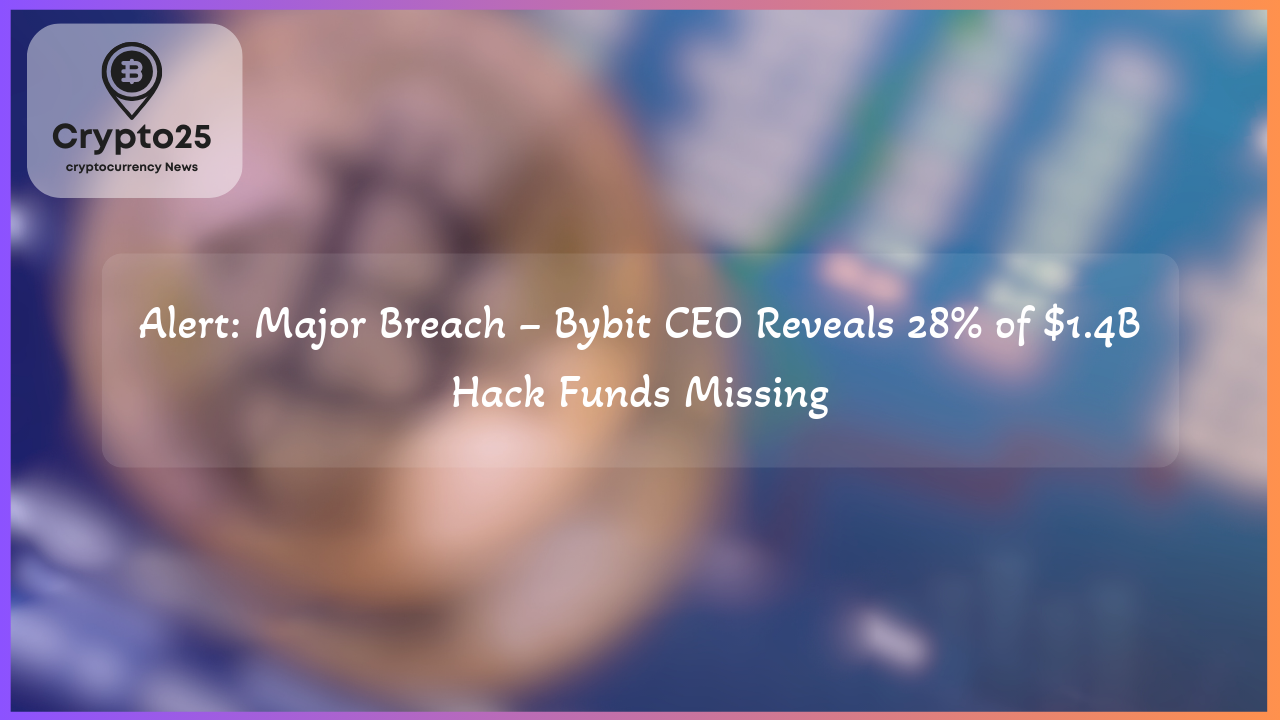
The cryptocurrency industry continues to grapple with the shocking exploits tied to the notorious North Korean hacking entity, the Lazarus Group. A recent update from Bybit’s CEO, Ben Zhou, sheds light on the aftermath of a $1.4 billion exploit, where nearly 28% of the stolen funds have become untraceable. This incident highlights glaring vulnerabilities within the digital asset ecosystem, underscoring the urgent need for advanced security measures and community-driven solutions.
## Bybit Hack: A Spotlight on the Lazarus Group’s Tactics
The Lazarus Group’s sophisticated methods were on full display in the February attack on Bybit, during which 500,000 ether (ETH) was stolen. The group bypassed security protocols to gain control of a specific ETH cold wallet, transferring the funds to an undisclosed address. Forensics reveal a deliberate attempt to obfuscate the funds’ origin, using advanced crypto-mixing and cross-chain swap techniques. According to Zhou, of the total funds stolen, 68.57% remain traceable, 27.59% have become untraceable after passing through mixers, and 3.84% have been frozen.
Mixers such as Wasabi, Railgun, Tornado Cash, and CryptoMixer played a significant role in anonymizing the stolen assets. Following this, the funds were moved across blockchain ecosystems using cross-chain tools like Thorchain, eXch, Lombard, LiFi, Stargate, and SunSwap. The final stage involved converting these illicit funds into liquid assets, adding an extra layer of complexity for forensic experts.
## Tracing the Movement of Stolen Cryptocurrency
In this breathtaking display of technical prowess, Lazarus Group focused on transferring and converting assets to limit traceability. Insights from Bybit’s forensic analysis show that 84.45% of the stolen funds, amounting to 432,748 ETH, were swapped from Ethereum to Bitcoin via the decentralized platform Thorchain. Of this, 342,975 ETH (representing $960.33 million) was converted into 10,003 BTC and distributed across 35,772 wallets with an average balance of 0.28 BTC per wallet.
Meanwhile, 5,991 ETH, or 1.17% of the total, remains on the Ethereum blockchain, hidden across roughly 12,490 wallets. The fragmented nature of these wallet distributions highlights how attackers diversify their assets to complicate recovery initiatives. Irrespective of the scale and enforcement efforts, nearly 28% of the stolen funds are identified as “dark,” indicating they are untraceable within current investigative frameworks.
| Title | Details |
|---|---|
| Market Cap | $1.2 Trillion |
## The Call for Global Collaboration in Combating Crypto Crimes
The Lazarus Group’s actions underscore the importance of international cooperation and advanced blockchain analytics in addressing crypto-related crimes. Bybit’s recent “Lazarus Bounty” initiative sheds light on industry efforts to strengthen security through collective action. Zhou revealed that 5,443 bounty reports were submitted within two months, with 70 deemed valid. These efforts aim to use the expertise of “bounty hunters” to crack encryption and track funds flowing through crypto mixers.
However, Zhou emphasized the need for scaling these efforts, particularly in decoding complex mixing patterns. The stakes are high — not only for Bybit but for the entire crypto landscape. This high-profile hack serves as a clarion call for exchanges, regulators, and individuals to bolster security measures, deploy smarter anti-money laundering protocols, and prioritize community-led initiatives.
The challenge posed by the Lazarus Group is a stark reminder of the risks surrounding decentralized assets. As hackers employ evolving tactics, the crypto community must respond with enhanced vigilance, innovative solutions, and collaborative frameworks. Only through these concerted efforts can the space build a more secure and resilient financial ecosystem poised for global adoption.
